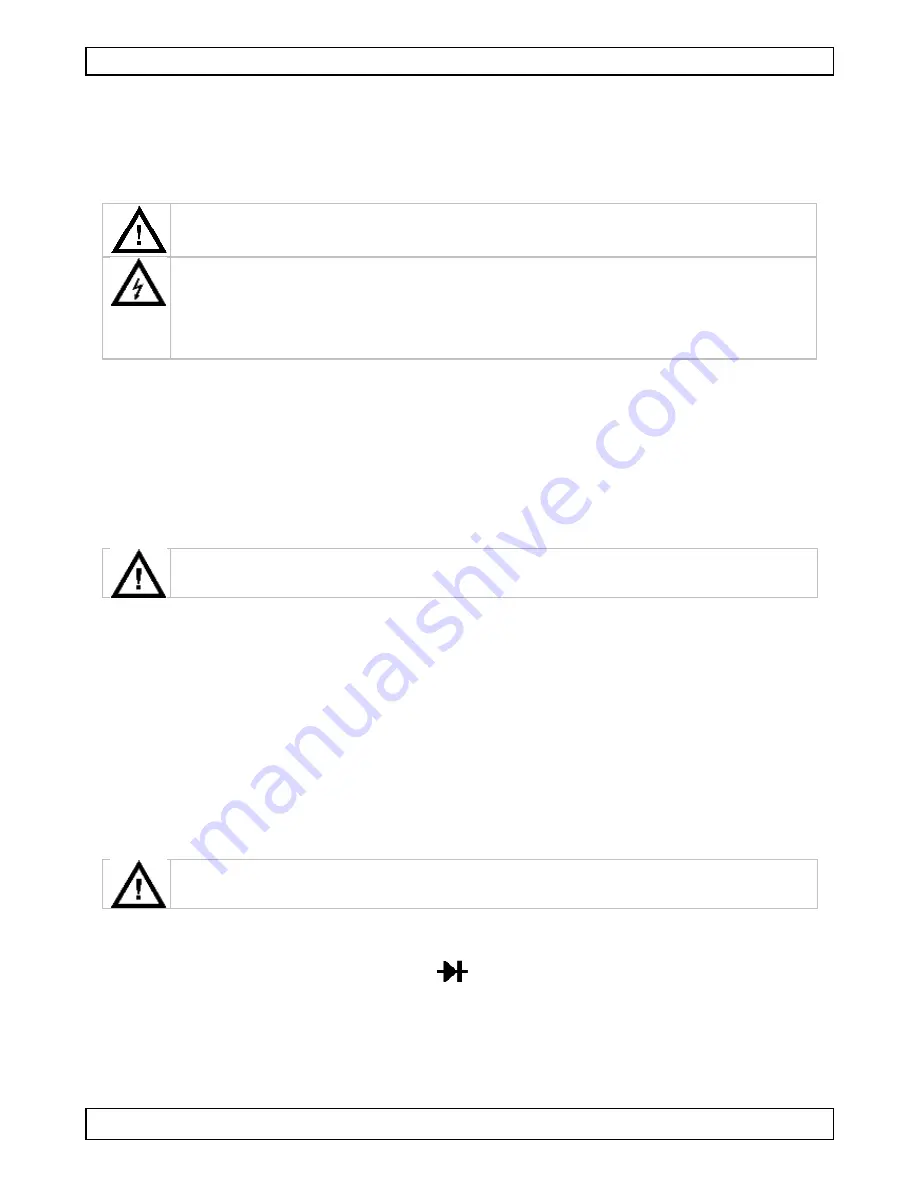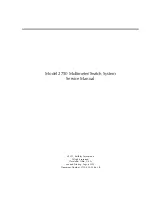
DVM851
V. 03 – 23/10/2015
12
©Velleman nv
4. Read the current value and the polarity of the red lead connection
on the LCD display
10.3
AC VOLTAGE MEASUREMENT
Do not measure circuits that may contain voltages > 600V
Use extreme caution when measuring voltages higher than
60Vdc or 30Vac rms.
Always place your fingers behind the protective edges of the
test probes while measuring!
1. Connect the red test lead to the "V
mA" jack and the black test
lead to the "COM" jack.
2. Set the rotary switch in the appropriate ACV position.
3. Connect the test leads to the source to be measured.
4. Read the voltage value on the LCD display.
10.4
RESISTANCE
Do not conduct resistance measurements on live circuits. Make
sure all capacitors in the circuit are depleted.
1. Connect the red test lead to the "V
mA" jack and the black test
lead to the "COM" jack (the red lead has a positive polarity "+").
2. Set the rotary switch in the appropriate "
" range position.
3. Connect the test leads to the resistor to be measured and read the
LCD display.
4. If the resistance being measured is connected to a circuit, turn off
the power and discharge all capacitors before applying the test
probes.
10.5
DIODE TEST
Do not conduct diode- or continuity measurements on live
circuits. Make sure all capacitors in the circuit are depleted.
1. Connect the red test lead to "V
mA" jack and the black one to the
"COM" jack (the red lead has a positive polarity "+".).
2. Set the rotary switch in the "
" position.
3. Connect the red test lead to the anode of the diode to be tested
and the black test lead to the cathode of the diode. The approx.
forward voltage drop of the diode will be displayed. If the
connection is reversed, the display will merely show a "1".













































